Explore some science this holiday with this fun Christmas science experiment — can you make Santa’s sleigh fly?!!
This easy and very cool holiday science activity is perfect for elementary and middle school kids — it’s great for a class party activity or a fun way to learn over the holiday break.
Just grab a copy of the FREE printable worksheet & see if your kids can get Santa’s sleigh airborned in this creative STEM challenge!
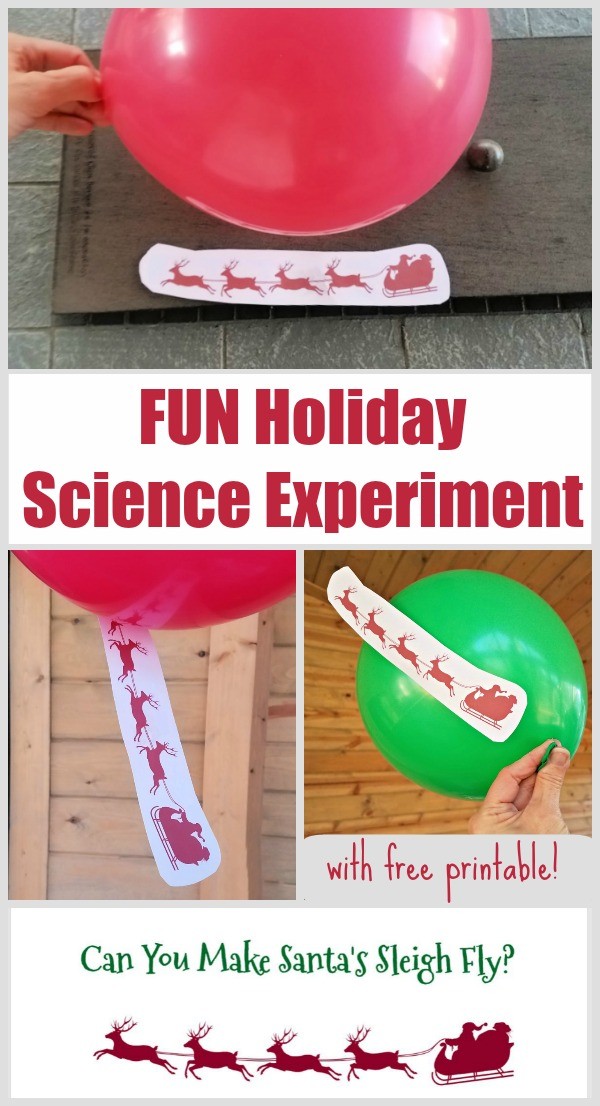
Fun Christmas Science Experiment for Elementary & Middle School Kids
I totally LOVE finding ways to weave science into holiday activities! And this one is pretty cool 😉
Kids will explore the idea of electrons and positive/negative charges as they try to get Santa’s sleigh to fly!
All you’ll need is a balloon (red or green preferred 😉 and the FREE printable worksheet below.
Christmas Science Experiment: Static Electricity
The concepts kids will learn during this activity include: understanding atoms, electrons, neutrons and protons along with the creation of static electricity.
As always, it’s great to begin with a book when introducing new ideas! Here are a few of our favorite books about electricity along with affiliate links to each one:
Oscar & the Bird: A Book about Electricity is great for preschoolers and young kids! Follow Oscar the kitten and Bird as they explore all types of electricity!
Charged Up: The Story of Electricity is a fun way to learn about electrical energy and how it travels. Includes lots of cool activities and informative illustrations!
The Magic School Bus and the Electric Field Trip – fans of this series (one of our faves!) will love this edition of the Magic School Bus and Ms Frizzle and the class learn about atoms, charges and electrical currents!
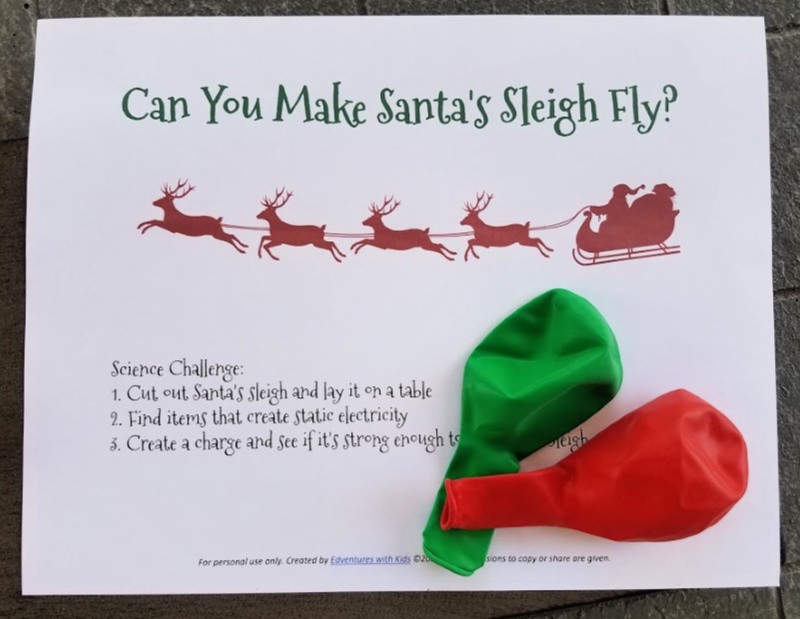
How is Static Electricity Made?
Explain to kids that all physical objects are made up of atoms (the books referenced above can really help with this!).
Inside an atom, you’ll find protons, neutrons and electrons.
- Protons have a positive charge,
- Electrons have a negative charge and
- Neutrons are neutral (they don’t carry a charge).
Opposite charges (positive and negative) attract each other. So protons and electrons like to be next to one another, while like charges (negative and negative) want to repel each other. If there are too many electrons on an object, they ‘push’ to get away from each other. Static electricity happens when there’s an imbalance between protons and electrons.
OK, let’s grab our supplies — you’ll need the following items:
- a balloon
- the FREE printable worksheet (see below)
- something that can create static electricity (see some ideas below)
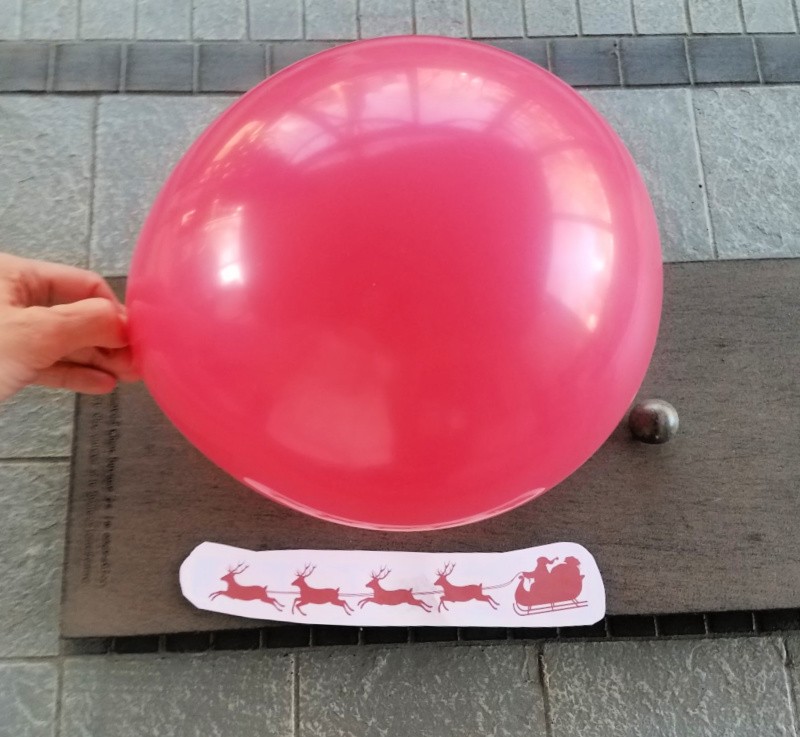
First, cut out the graphic of Santa, the reindeer and sleigh. Lay it down flat on a table, either face up or face down.
Then, blow up the balloon and tie the end of it.
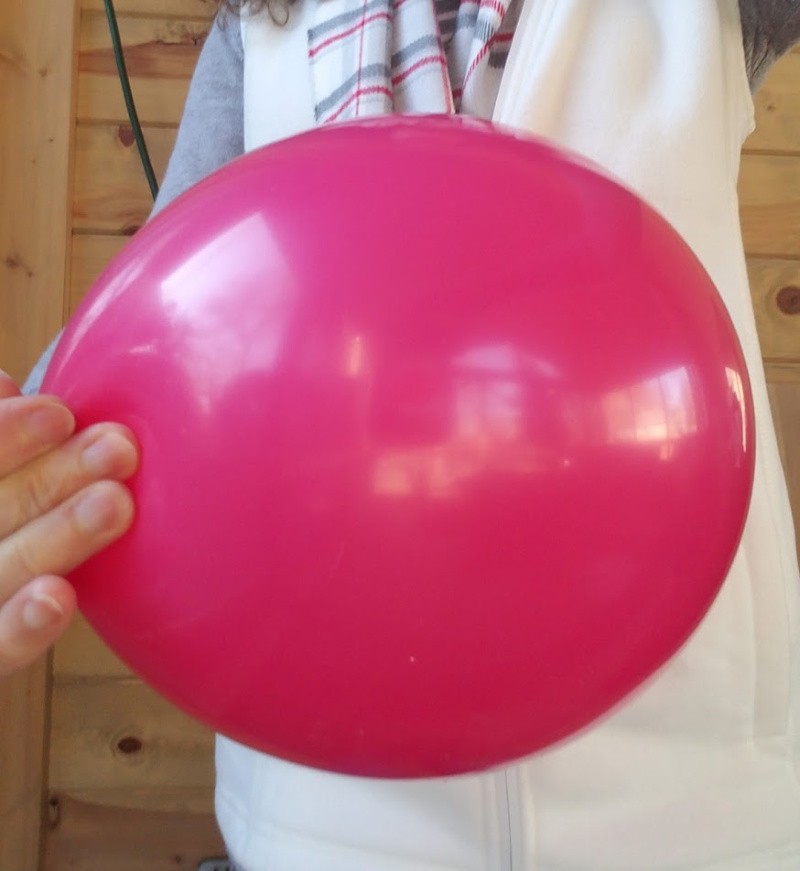
Next, you’ll need to create a charge!
In this experiment, the object that will hold the charge is a balloon. When you rub a balloon on a sweater or your hair, electrons will build up on the surface of the balloon. These charges will stay on the balloon — but since a lot of them will build up, they want to find a place to move to since they all have the same negative charge and don’t like being next to each other.
I rubbed the balloon on my fleece vest and scarf and it created quite a bit of static! One thing you’ll want to be sure to check — you need a place or day that includes dry (not moist or humid) air. For example, if you try this experiment on a rainy day, you’ll have a more difficult time creating a static charge.
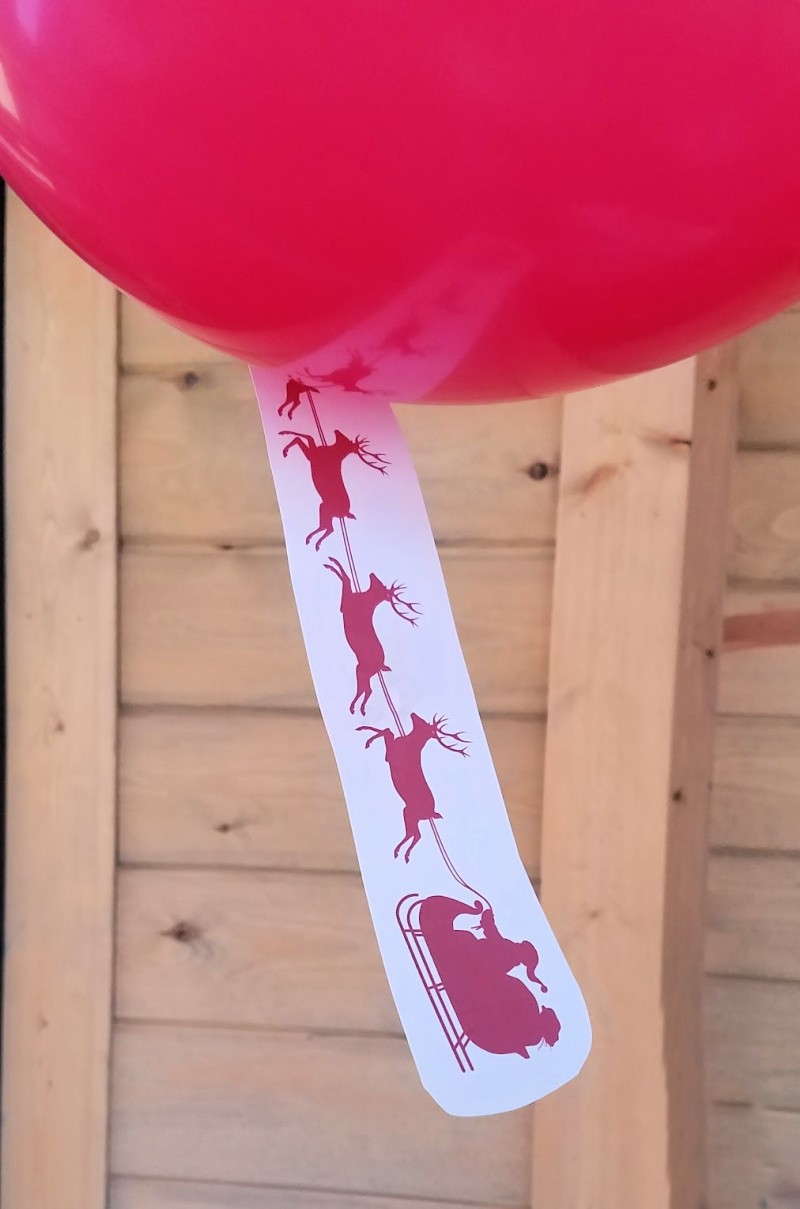
Once you rub the balloon and build up some charges, hold the balloon over the paper cut-out — if you’ve generated enough static electricity, the charges on the balloon should lift the paper off the table!
For more details, read How Does Static Electricity Work? from the Library of Congress.
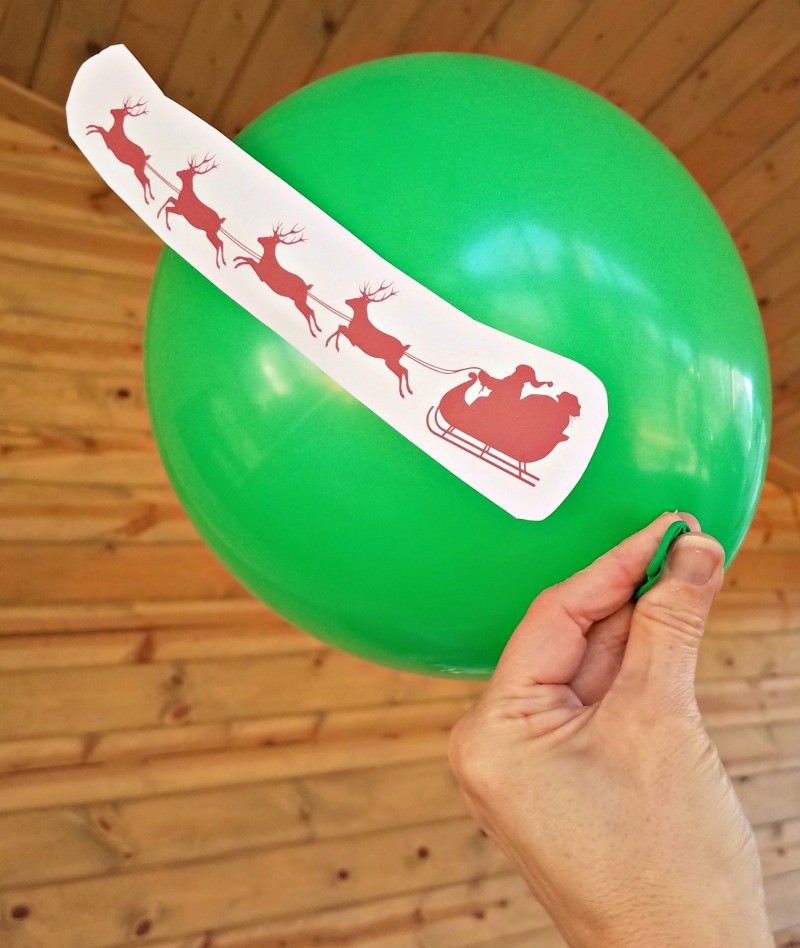
Make it a Christmas STEM Challenge!
How can you change this to also make it a STEM challenge? There are actually a few ways!
First, cut out different sizes of the Santa’s sleigh printable (this incorporates math) and then test to see if the larger sleigh cut-outs will fly as easily as the smaller sizes.
Second, show kids this cool Bill Nye video about Static Electricity (which incorporates tech into your activity).
Another way to incorporate STEM concepts is to ‘engineer’ your own paper sleigh! I’m sure kids would enjoy building a paper sleigh (you could even use light materials such as toothpicks or q-tips) and seeing if they can create enough of an electrical charge to get it airborne!
And the last idea is to present kids with the paper sleigh and balloon — and challenge them to come up with their own way to make Santa fly! For example, some kids might tape the graphic to a balloon, fill it with air and (instead of tying it), release it
Grab your FREE worksheet & enjoy some holiday science this year!
More Christmas Science Experiments
Holiday Sink & Float Experiment (with free printable!)
30 Christmas Science Experiments and STEM Activities


